
Smooth PCB assembly process is based on the production data of initial PCB design and specification of PCB fabrication. An excellent PCB design work will facilitate subsequent circuit board assembly processing (improving production efficiency, reducing the defect ratio, etc), while incomplete design will affect the processing process and even affect the quality of the final complete assembly product. So what critical factors on PCB design will affect latter circuit board assembly processing? Here is some common issues that circuit board designer need to have an attention on.
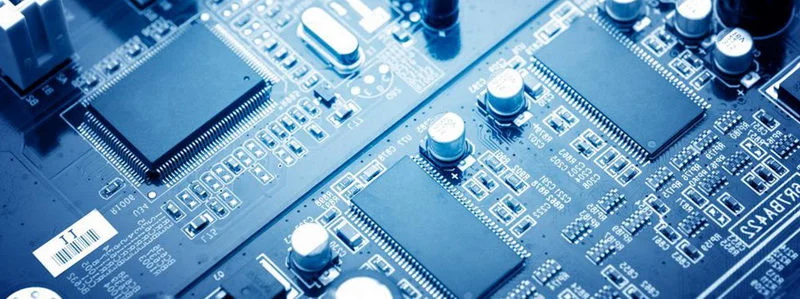
The silkscreen on the SMT PAD will affect the assembly quality (preventing the solder ability).
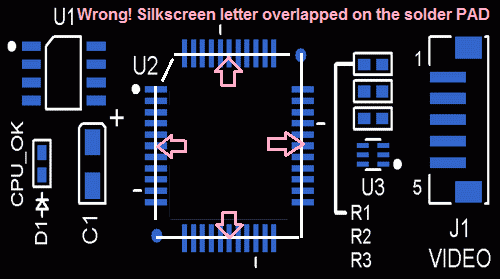
Not good design that silkscreen placed on SMT PAD
However, sometimes the silkscreen mark for some critical ICs is necessary due to that it can be used to identify the deviation of solder quality (especially for some high precious QFN components soldering). In this situation the IC’s edge mark can be put the corner of the SMT zone to avoid any overlapping issues to soldering PAD.
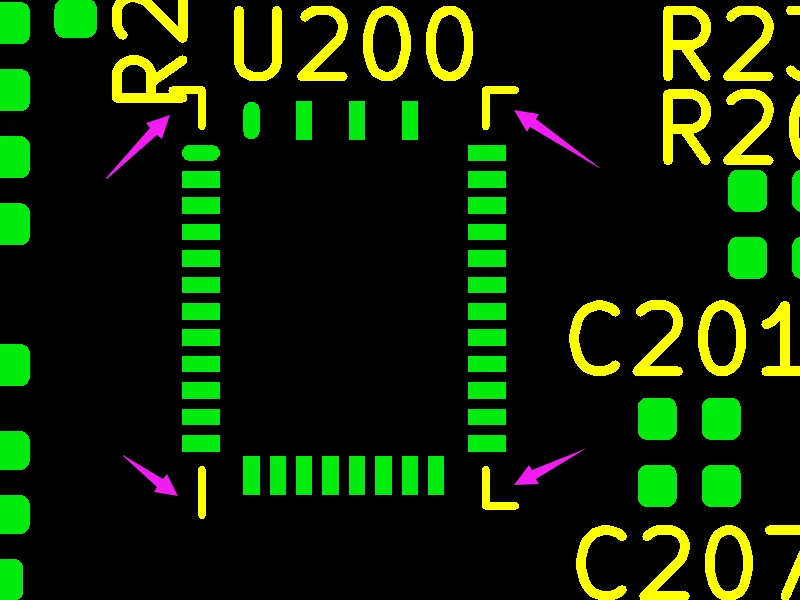
Adjust the IC edge mark to avoid silkscreen on SMT PAD
Fiducial mark (highlighted by red arrow in below picture) is necessary to be placed in single PCB (for single unit PCB) or on the tabs of a panel (PCB produced in a panel). It is used on assembly machines as the reference position for a paste printing machine or a pick-and-place machine to ensure a precise electronic components soldering operation in the PCB assembly process. Normally the minimum diameter of a circular fiducial mark is 1.5 mm with 3.0mm solder mask opening area locates on a 10mm width break-away tab (or on the some places in a single PCB).
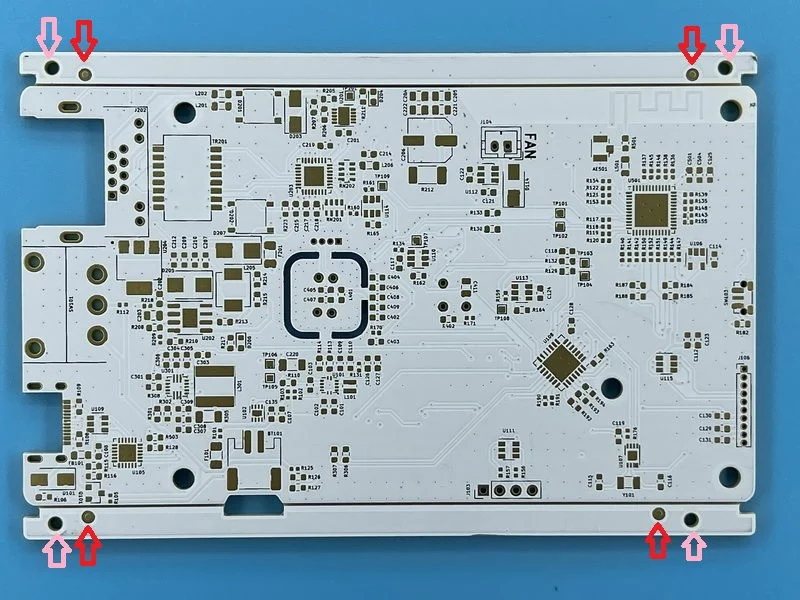
PCB fiducial mark and tooling holes
Tooling holes (highlighted by pin arrow in above picture), normally which is a non-plated hole with a typical size 3.0mm under quantity of 3 pcs at least to be placed on the single circuit board or on the tab of a PCB panel. This is use to fix the printed circuit board not to freely move during some specific PCB manufacturing process such as electronic test process and outline profile process. This is necessary holes for convenience to PCB fabrication and manufacturing process.

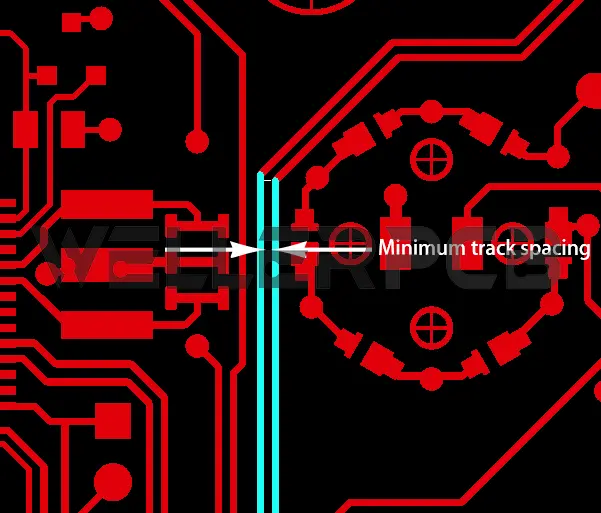
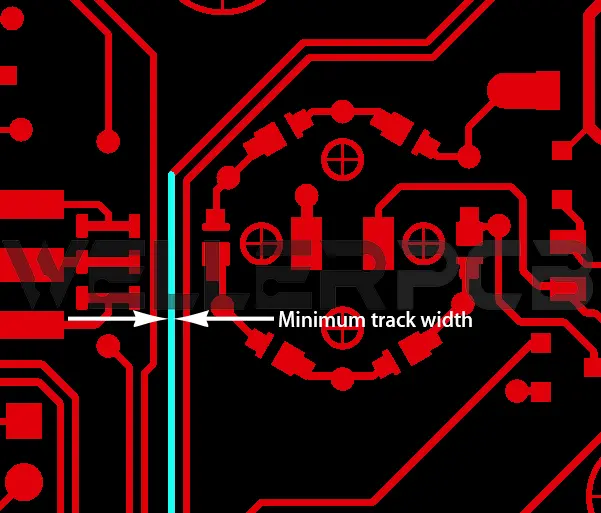
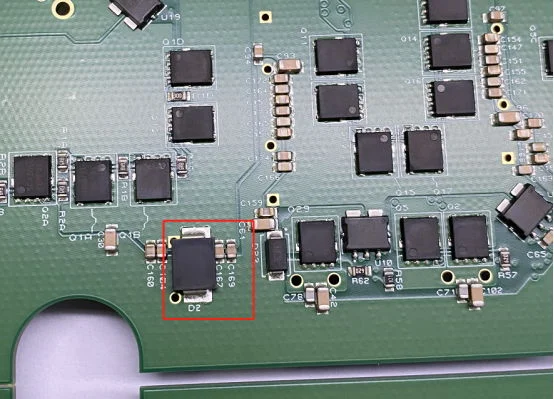
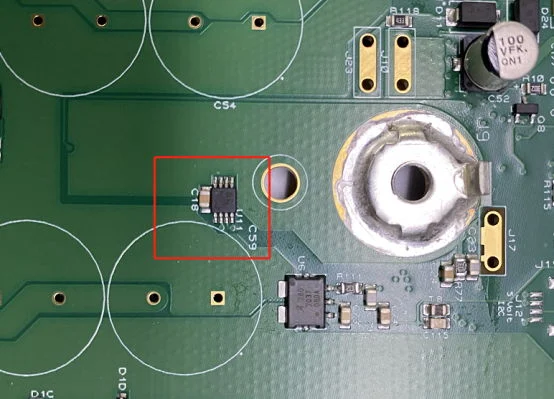
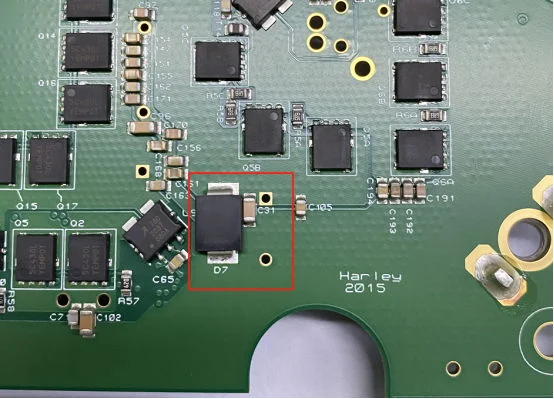
The above items is common PCB design factors that directly affect PCB assembly processing, which the PCB layout designer need to know. If you have any other engineering questions please feel free to send your concerns to our email: service@wellerpcb.com, we will response within 24 hours.





